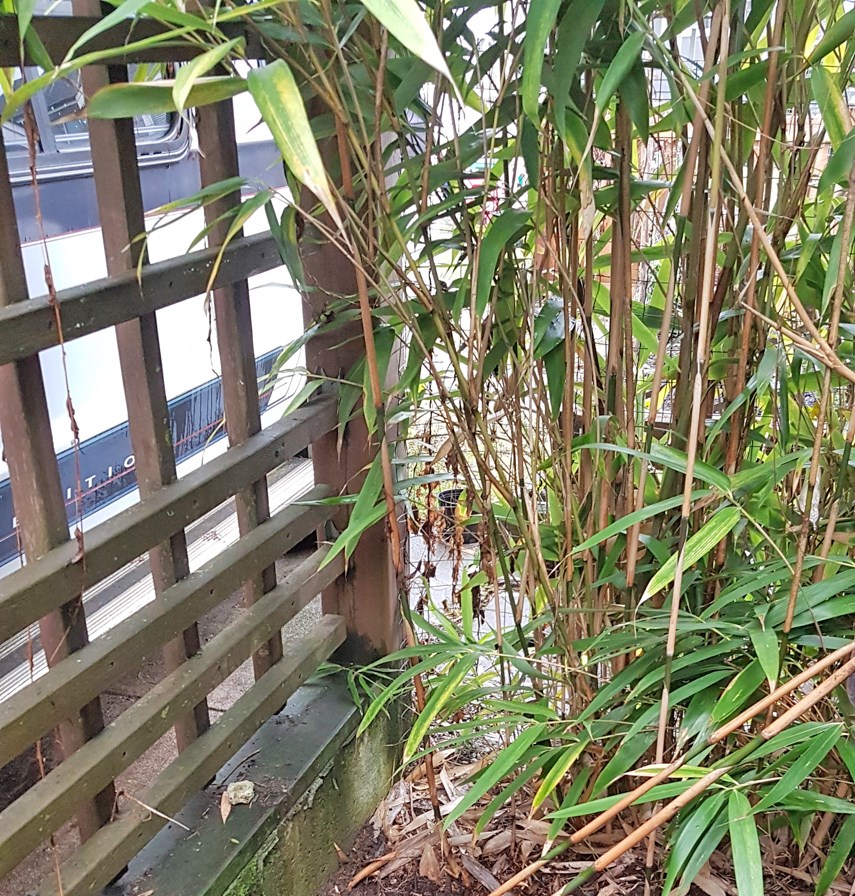In the early 1980s, when I was a new property owner and enthusiastic young gardener seeking the privacy of a Gulf Island acreage on a 50-foot city lot, I planted five good-sized running type bamboo plants along a small section of my property line, one clumping plant rescued from my former home.
The clumping one seemingly died, but a couple of years later it showed some signs of life and was lovingly transplanted to a new home.
Six years ago, this clumping type had taken over a huge area, and was renovated with a backhoe. I kept some and I think it has made a lifestyle change and become a galloping clumping type! I particularly like this variety for stakes as it has no side branches and is perfect for propping up plants.
I also planted one black bamboo plant, it was a good choice, growing very slowly and kept in check by colder winters. Unfortunately, it is overwhelmed by the more aggressive running type.
For many years I enjoyed the running type bamboo’s slow expansion along the fence line, giving me more privacy, constant motion with its beautiful foliage and a good supply of garden stakes. Suddenly it became an encroaching monster needing conquering! Every year I spend at least a day logging the 20-plus-foot stalks and many days digging, prying chopping and hauling the underground rhizomes that find their way under shrubs, giant ferns, and mulched work areas. These underground shoots follow the edges of concrete foundations, infiltrate outdoor plumbing pipes and sneak under the edges of raised beds, wreaking havoc in vegetable boxes.
When we have snow, the long stems bend to the ground under the weight of the snow, and until the way is cleared make it impossible to pass.
Easy enough – one just needs to pull on the leaves to shake the snow off and be prepared for an avalanche of snow down your neck unless you are wearing a hood. I appreciate the thicket they form providing habitat for hummingbirds. I am pretty sure the Anna’s hummingbirds that frequent my feeder spend their nights in the thicket.
While visiting southern Mexico I went to a bamboo farm whose owner grew hundreds of varieties of the plant, and the main revenue from the farm came from stems harvested to be used as building materials. It was cut and then immersed in large vats filled with chemicals to deter insects from devouring it.
There are a few stands of timber bamboo on the North Shore, the stems sometimes growing to four inches in diameter and more than 30-feet tall.
Nowadays we know when planting bamboo to install a barrier of least 18 inches tall in the ground to prevent the spread of roots, although I really can’t imagine a barrier would have stopped the rampant forest in my backyard.
In some areas I have dug a trench and filled it with leaves, and then pull the leaves aside each summer to cut the emerging rhizomes. This works well when I remember to do the yearly rhizome hunt and keep the trench full of easily disturbed matter. Once the leaves rot and turn to soil, all advantage is lost.
Bamboo does not usually do well in planters it loves lots of space, sun and water, often the plants I see growing in containers are looking very unhappy.
Heather Schamehorn is a certified residential landscape designer, educator, sustainability advocate and acupressure therapist. Contact via perennialpleasures.ca.



